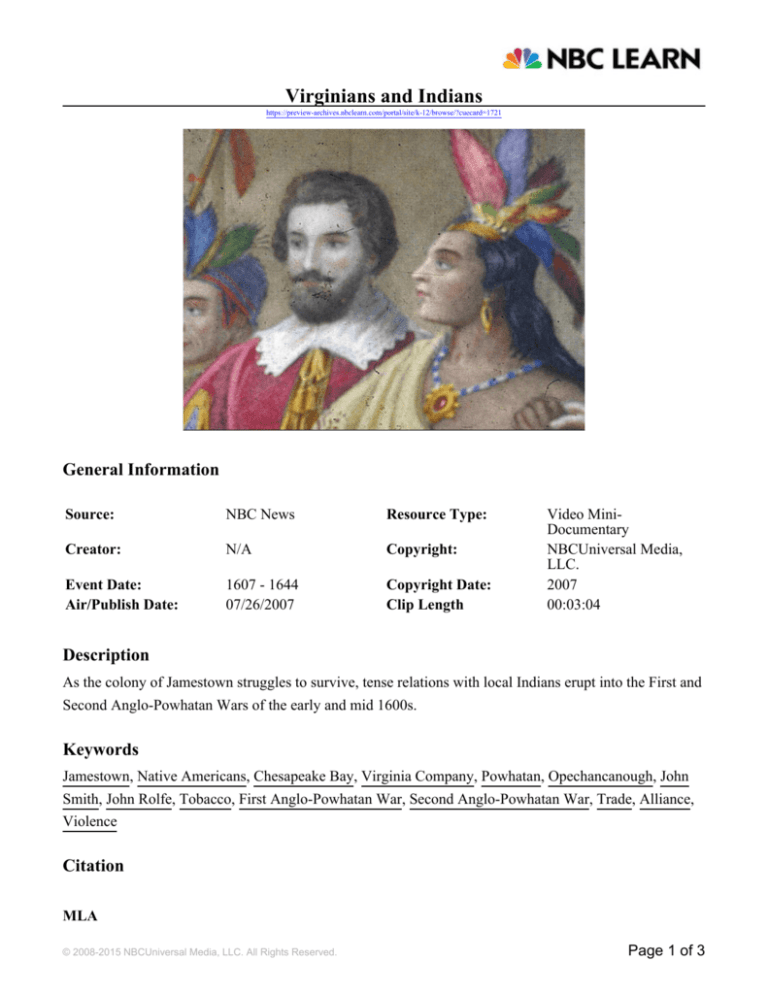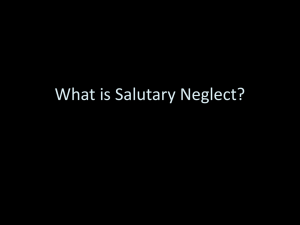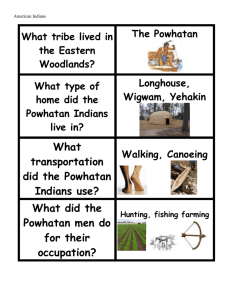
Virginians and Indians
https://preview-archives.nbclearn.com/portal/site/k-12/browse/?cuecard=1721
General Information
Source:
NBC News
Resource Type:
Creator:
N/A
Copyright:
Event Date:
Air/Publish Date:
1607 - 1644
07/26/2007
Copyright Date:
Clip Length
Video MiniDocumentary
NBCUniversal Media,
LLC.
2007
00:03:04
Description
As the colony of Jamestown struggles to survive, tense relations with local Indians erupt into the First and
Second Anglo-Powhatan Wars of the early and mid 1600s.
Keywords
Jamestown, Native Americans, Chesapeake Bay, Virginia Company, Powhatan, Opechancanough, John
Smith, John Rolfe, Tobacco, First Anglo-Powhatan War, Second Anglo-Powhatan War, Trade, Alliance,
Violence
Citation
MLA
© 2008-2015 NBCUniversal Media, LLC. All Rights Reserved.
Page 1 of 3
"Virginians and Indians." NBC News. NBCUniversal Media. 26 July 2007. NBC Learn. Web. 31 January
2015
APA
2007, July 26. Virginians and Indians. [Television series episode]. NBC News. Retrieved from
https://preview-archives.nbclearn.com/portal/site/k-12/browse/?cuecard=1721
CHICAGO MANUAL OF STYLE
"Virginians and Indians" NBC News, New York, NY: NBC Universal, 07/26/2007. Accessed Sat Jan 31
2015 from NBC Learn: https://preview-archives.nbclearn.com/portal/site/k-12/browse/?cuecard=1721
Transcript
Virginians and Indians
NARRATION: Just when it looked like the settlers of Jamestown would be wiped out by disease and
starvation, the local Indians led by their chief, Powhatan, stepped in and saved them.
Professor KAREN ORDAHL KUPPERMAN (New York University): Jamestown existed at all because
Powhatan decided to allow it to exist, because they were completely dependent on the Indians for food.
And so then the question is, why did Powhatan let them stay? And I think the answer has to be because he
also saw this as something that would be beneficial. Those manufactured goods, particularly iron tools,
would be useful to him.
NARRATION: Powhatan, the powerful Indian chief, saw the English settlers as valuable trading partners.
The new iron tools would prove invaluable for farming, hunting, and fighting. It started out as a mutually
beneficial arrangement but a drought increased tension, because the Indians themselves were struggling to
find food.
KUPPERMAN: The colonists were making these incredible demands on the Indians, at a time when they
themselves were very hard pressed.
NARRATION: The relationship started well but eventually dissolved into violence. After the colony’s
leader, John Smith, was injured from a gunpowder accident he left Jamestown and returned to England.
Order in the settlement quickly disintegrated. The colonists began to torment the local Indians and burn
nearby villages. In 1614, the Indians and the Virginians settled into an uneasy truce when entrepreneur
John Rolfe married Powhatan’s daughter, Pocahontas.
KUPPERMAN: And that brings the tension, for the moment, the tension between the English and the
Indians in the Chesapeake, to a halt. It’s not because of the marriage, but the marriage, I think offers them
a chance to draw back and say, “Okay, we’re going to try a different relationship.”
NARRATOR: However, the truce did not last. The Indians rebelled when the colonists expanded their
settlements further and further into Indian lands. In 1622, Powhatan’s brother Opechancanough, led local
Indians in a massive attack on the colony.
KUPPERMAN: They do succeed in killing a third of the colonists but they don’t end the project.
© 2008-2015 NBCUniversal Media, LLC. All Rights Reserved.
Page 2 of 3
NARRATOR: The 900 surviving colonists responded by burning Indian villages and slaughtering their
inhabitants. Violence between the colonists and the Indians marked the next twenty years. Finally, in
1644, colonists crushed Opechancanough’s last desperate rebellion, in what is known as the Second
Anglo-Powhatan War. Thirty years after landing at Jamestown, the colonists drove the surviving Indians
west, forcing them to seek permission to enter areas of European settlement.
© 2008-2015 NBCUniversal Media, LLC. All Rights Reserved.
Page 3 of 3









